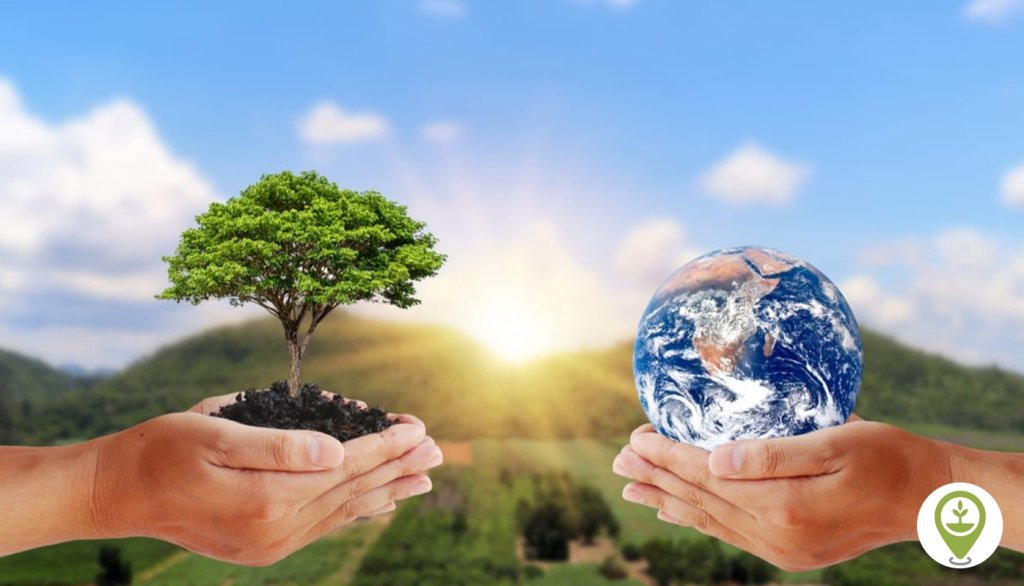As humans, we often take for granted the delicate balance of nature that surrounds us. We are surrounded by a complex web of living organisms and non-living components, interacting in a unique way to form what is known as an ecosystem. But what exactly is an ecosystem? Why is it important? And what can we do to protect it?
In this article, we will delve deep into the concept of ecosystems, exploring its characteristics, roles, and the threats it faces. We will also discuss potential solutions to preserve and maintain these vital systems. So let’s begin our journey of understanding what is ecosystem.
Definition and Characteristics of Ecosystem
Before diving into the complexities of ecosystems, let’s first understand what it actually means. An ecosystem can be defined as a naturally occurring system comprising living organisms (plants, animals, microbes) and non-living components (soil, water, air) interacting in a complex way. It is a dynamic and interconnected network where each component plays a vital role in maintaining the equilibrium of the system.

Interaction
One of the key characteristics of an ecosystem is the interaction between living and non-living components. These interactions can be direct or indirect, and they create a delicate balance within the system. For example, plants absorb nutrients from the soil, animals feed on these plants, and then decomposers break down the waste of these animals to return nutrients back to the soil. This cycle of interaction ensures the sustainability of the ecosystem.
Biodiversity
Ecosystems are known for their high diversity of species, contributing to adaptation and stability. The variety of plants and animals within an ecosystem allows it to withstand disturbances and adapt to changing environmental conditions. A diverse ecosystem is also able to support a wide range of services, making it more resilient to external threats.
Ecological Cycles
Another important characteristic of an ecosystem is its ecological cycles. These cycles include food chains, nutrient cycles, water cycles, and carbon cycles that create interdependencies between species and ensure a continuous flow of energy and nutrients within the system. Each organism plays a specific role in these cycles, highlighting the importance of every living being in maintaining the health of the ecosystem.
Habitat-Based Classification
Ecosystems can be classified into different types based on the habitat they exist in. These include terrestrial, aquatic, freshwater, desert, forest, and many others. Each type of ecosystem has unique features and characteristics, which are shaped by the climate, topography, and other environmental factors of their specific habitat.

Adaptive Response
Ecosystems have the ability to adjust to environmental changes through a process called adaptation. This means that when faced with a disturbance or change, ecosystems are able to modify themselves and maintain their functionality. This is crucial for their survival as they constantly face natural and human-induced fluctuations.
Essential to Life
Perhaps the most important characteristic of an ecosystem is that it is essential to life. Ecosystems provide us with various services that are vital to our survival, such as food, clean water, clean air, and other resources. They also contribute to the regulation of our climate and protect against natural disasters.
Roles of Ecosystem
Now that we have a better understanding of what ecosystems are and their characteristics, let’s explore the important roles they play in sustaining life on Earth.

Food Source
Ecosystems provide food for humans and other species. From crops grown in agricultural ecosystems to fish caught in marine ecosystems, we rely on these systems for our daily sustenance. Without healthy and diverse ecosystems, our food sources would be limited, leading to potential food shortages and malnutrition.
Clean Water
Forests, rivers, and oceans all contribute to maintaining clean water. Ecosystems filter and purify water, making it safe for human consumption. Wetlands, for example, act as natural filters, removing pollutants and excess nutrients from water. Healthy aquatic ecosystems also play a crucial role in replenishing groundwater reserves and regulating the water cycle.
Clean Air
Plants play a vital role in maintaining clean air through photosynthesis. This process involves the absorption of carbon dioxide and the release of oxygen, which is essential for all living beings. Trees in particular are important for regulating air quality, as they absorb harmful pollutants and produce oxygen, making them natural air purifiers.
Resource Supply
Ecosystems provide us with various resources such as wood, oil, minerals, and other valuable resources. These resources are used in various industries and are crucial for our economic development. However, overexploitation of these resources can lead to depletion and even extinction of certain species, causing imbalances within the ecosystem.
Ecological Balance
Maintaining balance among species and habitats is another significant role of ecosystems. Each organism has a specific role to play in an ecosystem, and the removal of one species can have ripple effects throughout the entire system. For example, the decline of pollinators like bees can affect crop production and ultimately impact food availability for humans.
Climate Regulation
Ecosystems, particularly forests and oceans, play an important role in regulating our climate. Trees absorb carbon dioxide and release oxygen, helping to mitigate the effects of greenhouse gases on the environment. Oceans also act as carbon sinks, absorbing excess carbon from the atmosphere. Destruction of these ecosystems can lead to an increase in global temperatures and worsen the effects of climate change.
Environmental Protection
Lastly, ecosystems protect our natural environments and contribute to biodiversity conservation. They provide habitats for a diverse range of species and prevent soil erosion, flooding, and other natural disasters. Without healthy ecosystems, we would see a decline in biodiversity and an increase in environmental degradation.
Threats to Ecosystem
Despite their vital importance, ecosystems around the world are facing numerous threats that could potentially lead to their collapse. Here are some of the major threats that ecosystems are currently facing:
Overexploitation of Resources
Excessive use of natural resources such as forests, water, and minerals has had a severe impact on ecosystems. Deforestation, for example, not only contributes to the loss of animal and plant species but also disrupts ecological cycles and leads to soil erosion. Similarly, overfishing has depleted fish populations in many marine ecosystems, causing imbalances in food chains and disrupting the overall health of these systems.

Pollution
Pollution from industrial activities and waste disposal is another major threat to ecosystems. The release of toxic chemicals into the environment can have disastrous effects on both living and non-living components of an ecosystem. For instance, fertilizers and pesticides used in agriculture can pollute water sources and harm aquatic life, while air pollution can cause respiratory issues for both humans and animals.
Solutions for Preserving Ecosystem
Despite the challenges facing ecosystems, there are numerous ways in which we can work towards preserving and protecting them for future generations.
Sustainable Resource Use
Adopting sustainable practices in the use of natural resources is crucial for maintaining the health of ecosystems. This includes reducing our consumption of resources, promoting sustainable agriculture and fishing methods, and promoting renewable energy sources. By reducing our impact on the environment, we can ensure that ecosystems continue to thrive.

Conservation Efforts
Conservation efforts such as protected areas, nature reserves, and wildlife sanctuaries help to preserve and restore ecosystems. These areas act as safe havens for endangered species and allow for the recovery of damaged ecosystems. Additionally, education and awareness campaigns can also encourage people to value and protect their local ecosystems.
Government Policies and Regulations
Governments play a crucial role in protecting ecosystems through the implementation of policies and regulations. This can include laws against deforestation, pollution, and overexploitation of resources. Governments can also provide incentives for sustainable practices and support conservation efforts through funding and partnerships.
Conclusion
In conclusion, an ecosystem is a complex and dynamic system that comprises living and non-living components interacting with each other. It plays a vital role in sustaining life on Earth by providing essential services such as food, water, clean air, and resources. However, the threats facing ecosystems are ever-increasing, and it is our responsibility to take action to protect and preserve these systems. Through sustainable practices, conservation efforts, and government regulations, we can work towards restoring the delicate balance of our ecosystems and ensuring a healthier planet for generations to come.







